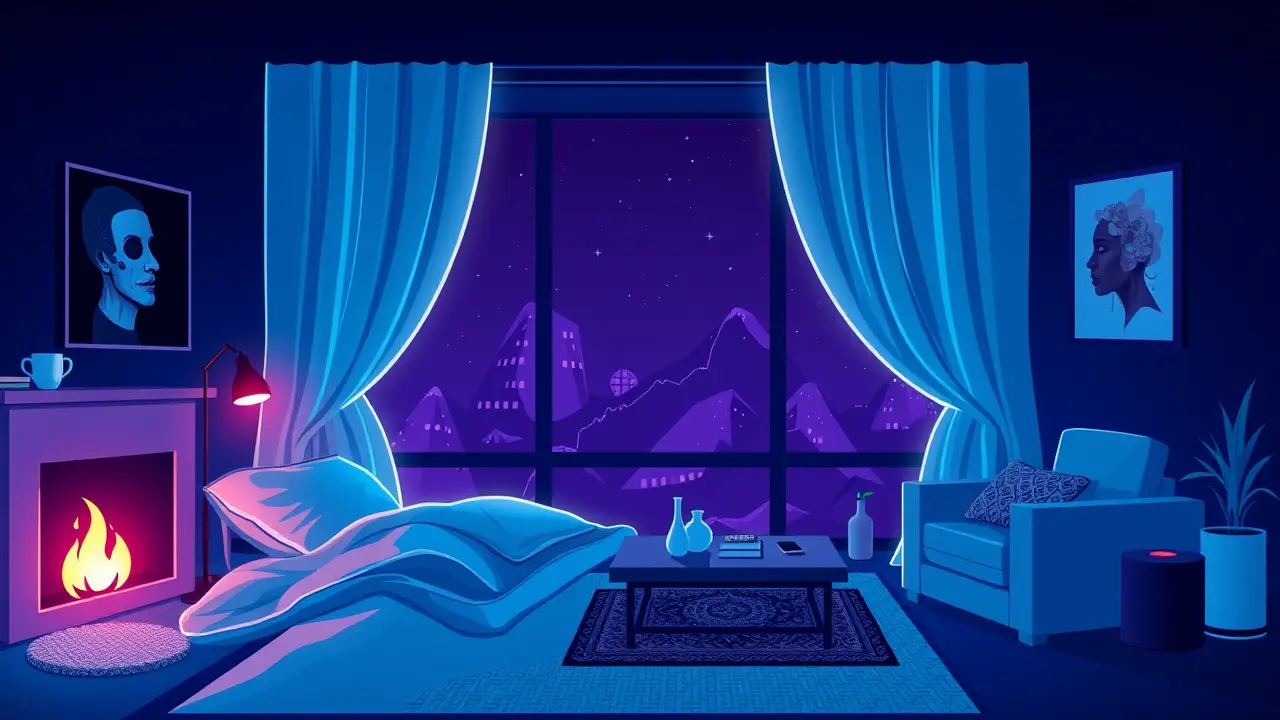
Entertainmentculture & trendsSocial Media Trends
Staying Home as Self-Care in New Great Lock-In Trend.
LA
Laura Bennett
16 hours ago7 min read6 comments
There’s a quiet shift happening in the way we think about our time and space, a collective turning inward that feels less like a trend and more like a fundamental recalibration of modern life. The ‘Great Lock-In,’ as it’s being called across social media platforms, isn't merely a seasonal aesthetic or a hashtag; it's a profound psychological pivot, a conscious decision by countless individuals to pull back from the frantic pace of external social obligations and reclaim their homes as sanctuaries for self-preservation.This movement, blossoming as the days shorten and a certain winter solemnity looms, frames staying home not as an act of isolation but as the ultimate form of self-care, a deliberate practice of creating boundaries to reset one’s mental and emotional compass. I’ve spoken to people in their late twenties and thirties who describe this not as laziness or antisocial behavior, but as a necessary ‘small course correction’—a phrase that keeps recurring—to counterbalance the burnout accumulated from a culture of perpetual availability and performance.One woman, a marketing manager from Chicago, told me how her Sunday evenings, once a source of dread for the week ahead, are now sacred; she turns off her phone, cooks a simple meal, and reads, a ritual that has, in her words, ‘reduced the static in my mind. ’ This echoes the sentiments of many who are consciously replacing the fall traditions of crowded tailgate parties and hectic comfort-food gatherings with the deeper comforts of solitude and intentional slowness.It’s a fascinating societal response, perhaps a lingering echo of the global lockdowns that forced us into our homes, only now the mandate is internal, self-imposed, and framed through a lens of wellness rather than fear. Historically, we might look to the Danish concept of ‘hygge’ or the Japanese practice of ‘forest bathing’ (shinrin-yoku) as precedents for culturally sanctioned withdrawal for well-being, but the Great Lock-In feels distinctly of this moment—a digitally native, post-pandemic phenomenon where the home has been re-evaluated as a multi-functional space for work, rest, and now, active emotional repair.It’s a rejection of the pressure to be constantly ‘on’ and ‘out,’ a quiet rebellion against the curated perfection of social media feeds that often mask profound exhaustion. The consequences of this collective deep breath are multifaceted; on one hand, it could foster a generation more attuned to their own needs and mental health, potentially reducing anxiety and improving overall life satisfaction.On the other, there is a risk of further social fragmentation, where community bonds weaken as individual cocoons strengthen. Local businesses that thrive on foot traffic, from cafes to bookstores, may feel the pinch of this new domesticity, while industries centered on home delivery, streaming services, and hobby kits stand to benefit.The trend also raises questions about the commodification of rest, as corporations quickly latch onto the ‘lock-in’ aesthetic, selling us everything from weighted blankets to artisanal tea subscriptions to facilitate our withdrawal. Yet, at its core, the Great Lock-In feels like a deeply human, almost instinctual, search for equilibrium.It’s about people listening to their own rhythms, prioritizing small, manageable acts of order—like finally organizing that closet or starting a journal—as a way to exert control in an increasingly chaotic world. It’s not about grand, life-altering resolutions, but the gentle, cumulative power of saying ‘no’ to the outside world in order to more fully say ‘yes’ to oneself.As one interviewee poignantly put it, ‘It’s not that I’m hiding from life; I’m just making sure I have a life worth coming home to. ’.
#wellness
#self-care
#staying home
#social media trends
#lifestyle
#mental health
#featured
Stay Informed. Act Smarter.
Get weekly highlights, major headlines, and expert insights — then put your knowledge to work in our live prediction markets.
© 2025 Outpoll Service LTD. All rights reserved.